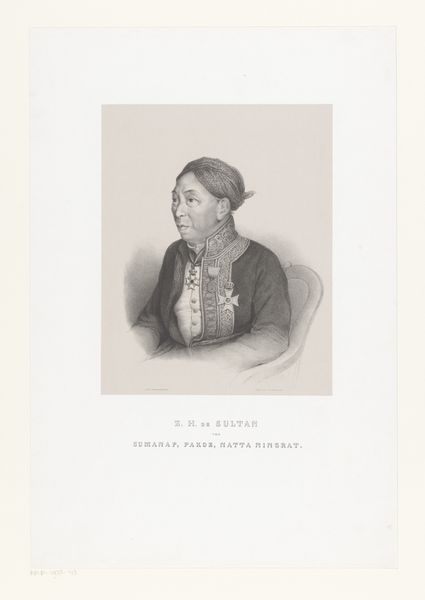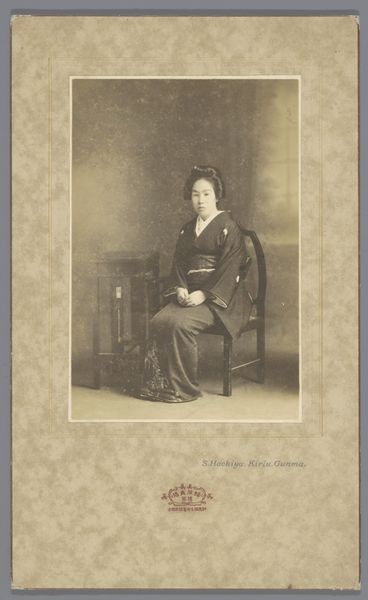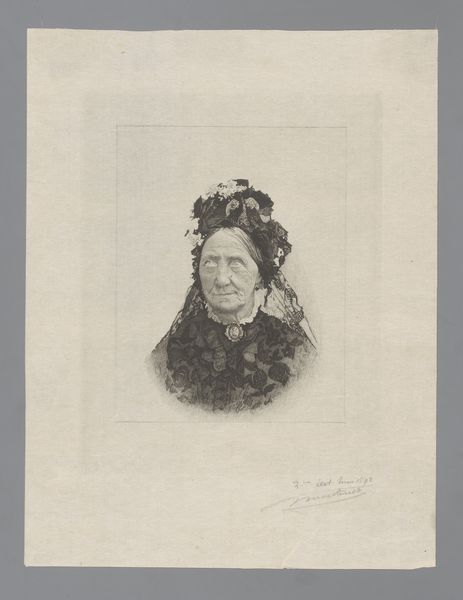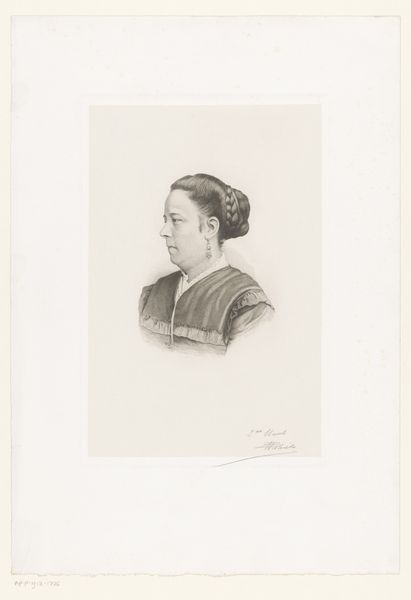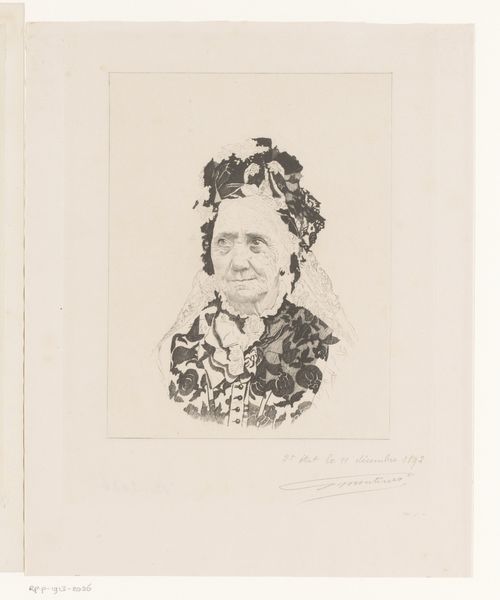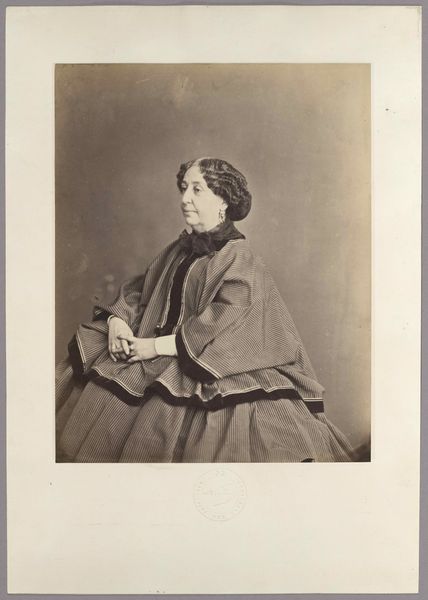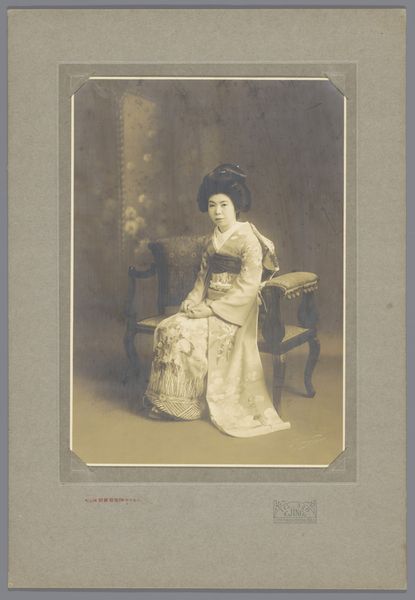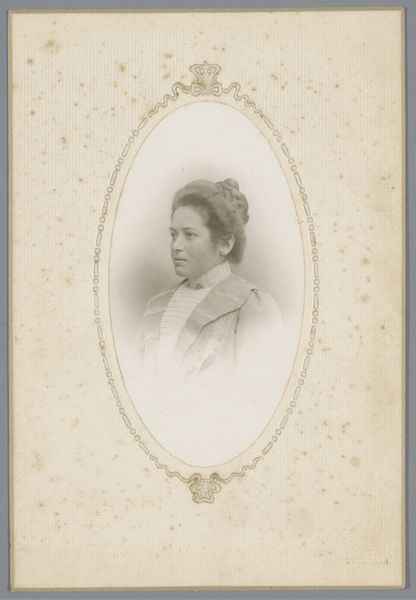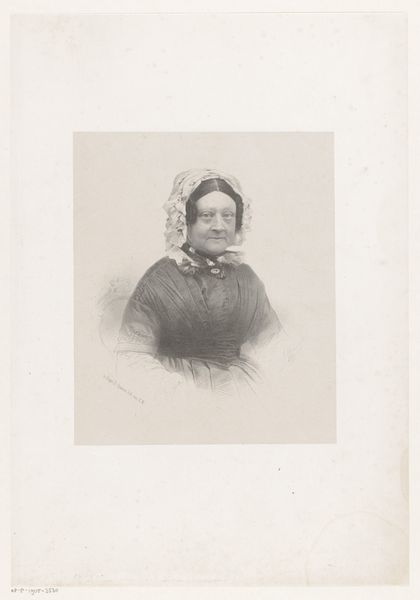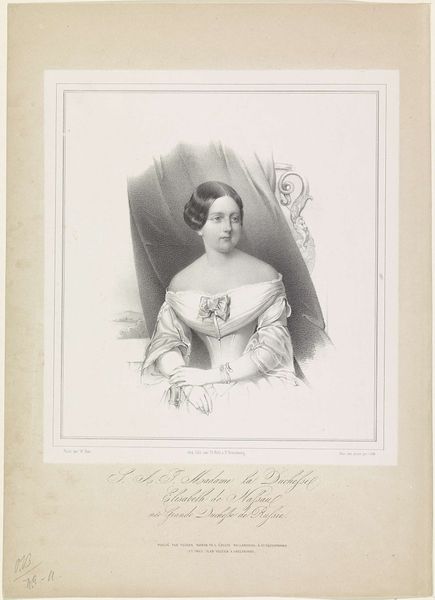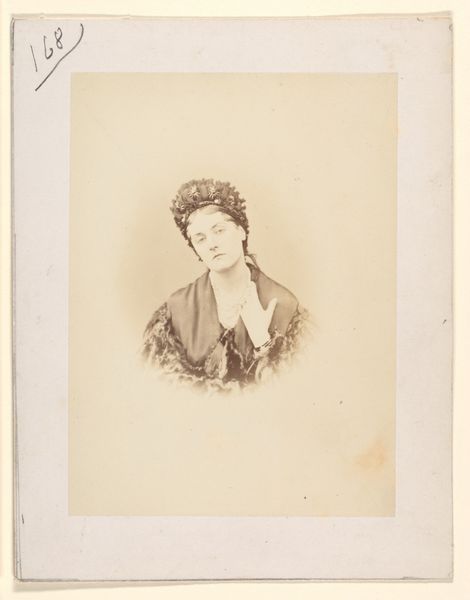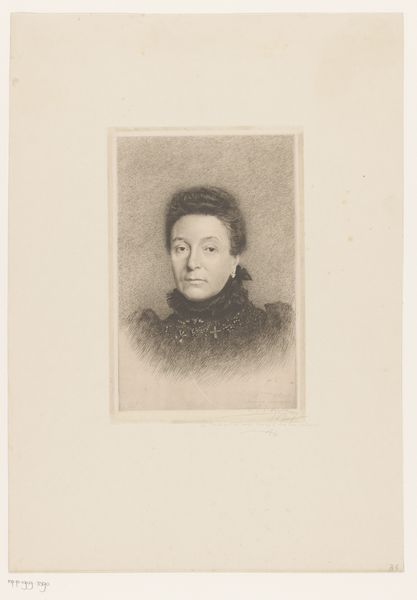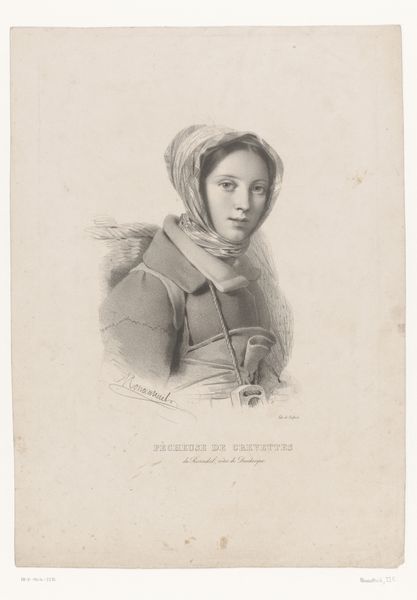
drawing, print, graphite
#
portrait
#
drawing
# print
#
graphite
#
academic-art
Dimensions: height 513 mm, width 375 mm
Copyright: Rijks Museum: Open Domain
Editor: Here we have Joseph Schubert’s "Portret van Marie-Thérèse Vautrin," created in 1877. It’s a drawing and print with graphite on paper, currently at the Rijksmuseum. It’s incredibly detailed. What strikes you about it? Curator: Consider the process of making such a portrait in the 19th century. Graphite allowed for mass production through printmaking techniques. It democratized image reproduction, moving portraiture from the realm of oil painting reserved for the wealthy. Did this availability alter how women of Marie-Thérèse's class were perceived? Editor: So you're saying it wasn't just about capturing her likeness but also about making that image accessible? Curator: Precisely. Think about the social context: photography was developing rapidly. How did the relative ease and lower cost of producing printed graphite portraits impact the market for other forms of portraiture, or the demand for professional draftsmen? Editor: It's like a shift in labor. The artist's skill is still there, but the materials and technology introduce new factors. What about the contrast between the craft of drawing and the mechanical process of printmaking? Curator: An excellent observation. It blurs those lines we often rigidly draw. How does the use of reproductive techniques impact the "aura" of this portrait, compared to, say, a unique painted portrait of a royal figure? Consider the means of production, labor investment, and final accessibility to viewers of differing classes. Editor: That really reframes how I see it. It's not just a portrait of a person, but also a product of a specific time and a shift in how images were made and shared. Thanks for shedding light on this! Curator: It’s been a useful exercise in considering an artwork as more than an isolated object, but as a product deeply entangled with material realities and evolving social practices.
Comments
No comments
Be the first to comment and join the conversation on the ultimate creative platform.
